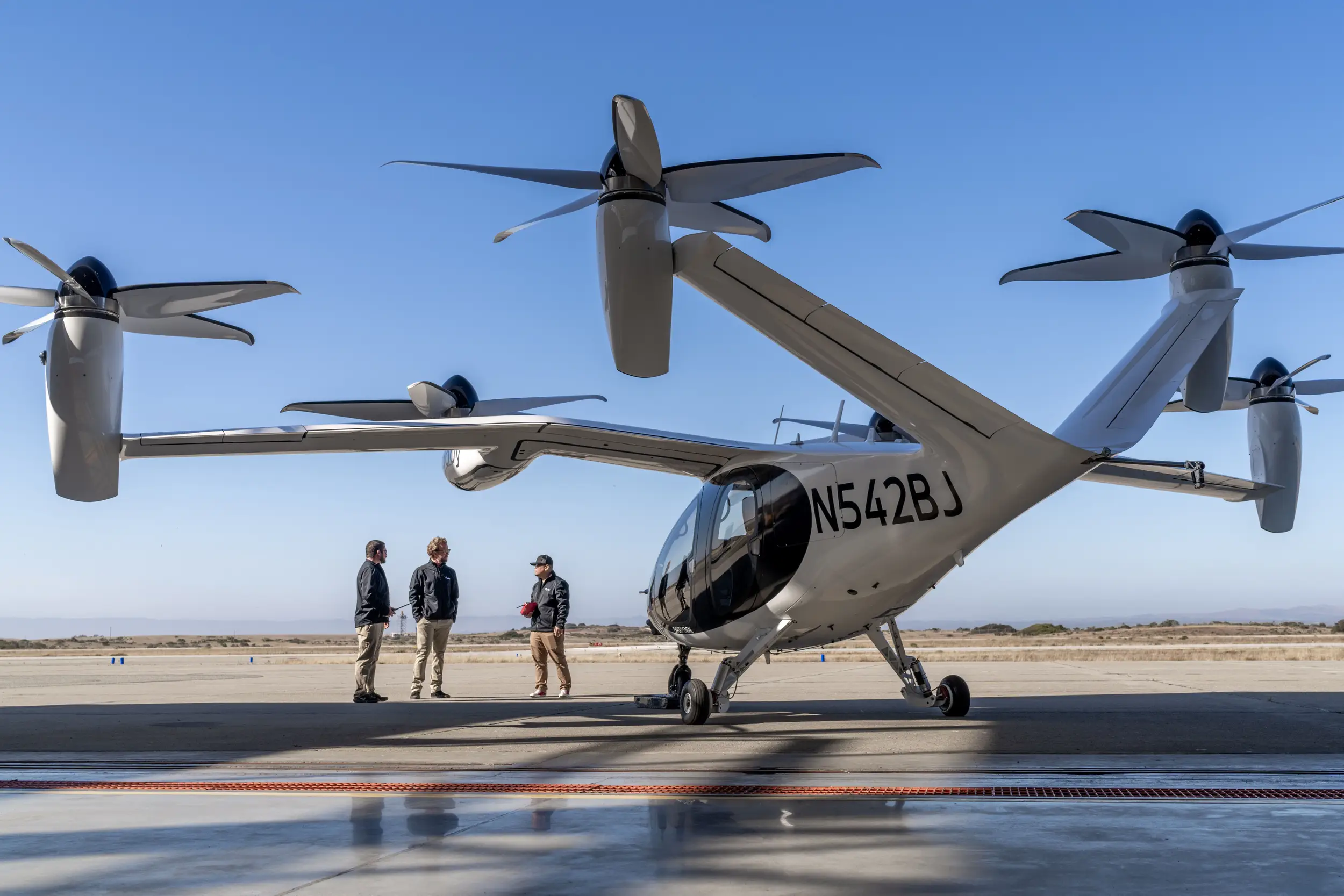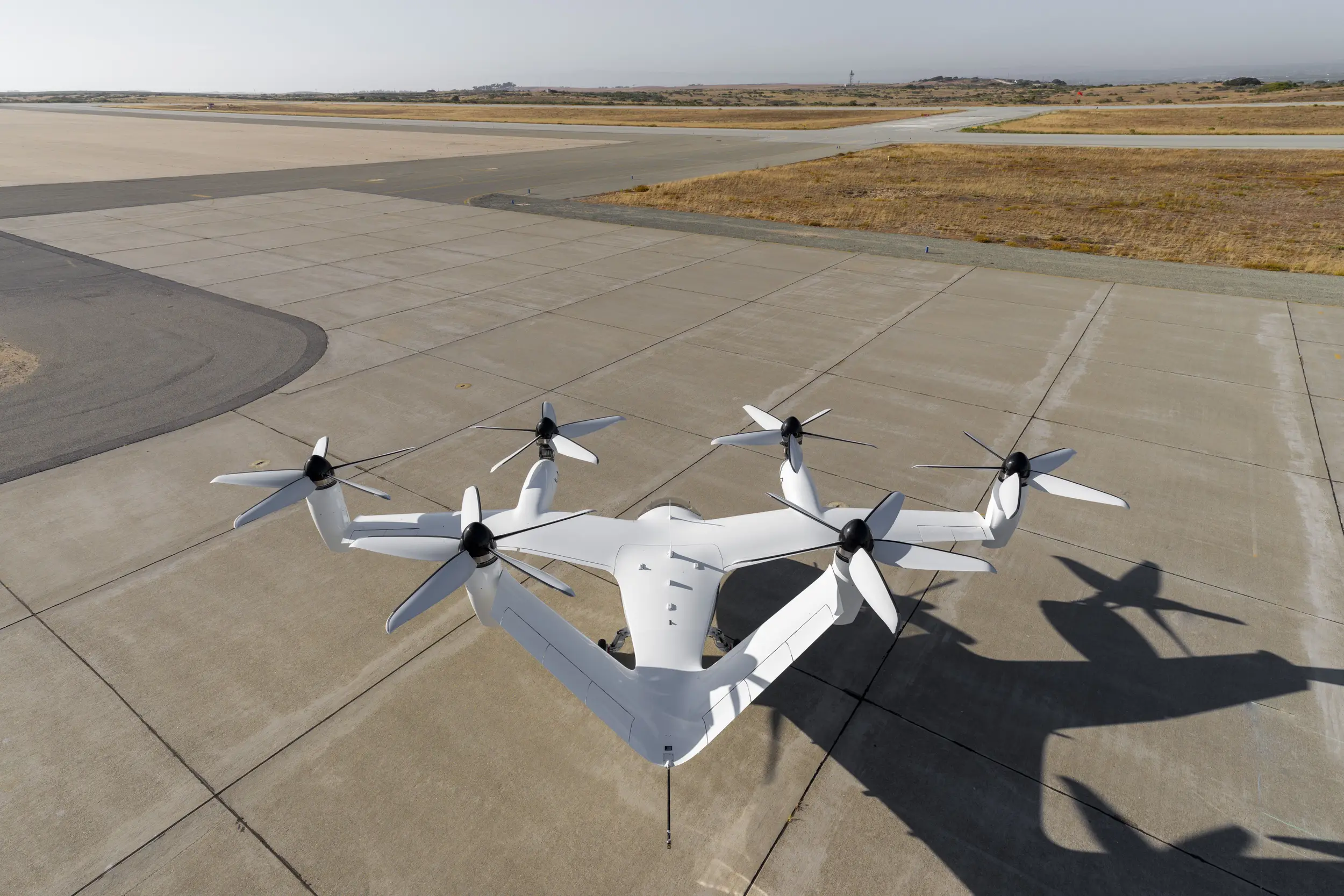
REPORT HOME > from cityscape to battlefield
APRIL 2023 | technology report | ROTARY-WING UAS
While initial solutions may be piloted or optionally crewed, in the long term hybrid and electric autonomous eVTOL-derived platforms could be a game-changer for resupply and medevac missions.
Above: Joby Aviation is one of the partners that has worked with the USAF through Agility Prime. (Photo: Joby Aviation)
The eVTOL sector has rapidly expanded in recent years, with high expectations for the technology’s applications in the commercial domain. Inevitably, militaries are now examining the sector for potential advantages from new aircraft classes.
The USAF’s Agility Prime programme is a prime example of this trend. This effort was launched in 2020 by AFWERX, a directorate of the Air Force Research Laboratory (AFRL) that aims to build connections between government, academia and industry and find applications for dual-use technology.
Agility Prime is designed to accelerate the development of the commercial eVTOL market, with the aim of bolstering US industry and advancing the technology for both commercial and military use.
It provides businesses – which are often start-ups – with access to DoD facilities like airspace or wind tunnels, contact with experts within the Pentagon, and funding for early experimentation and flight testing, among other work. It has achieved a range of milestones, such as the first airman flight of an eVTOL aircraft, which occurred in March 2022 with a BETA Technologies ALIA platform.
Prime advantage
Lt Col Tom Meagher, AFWERX Prime division chief, told Shephard that distributed electric propulsion could hold various benefits for military operators. He said a proliferation of electric motors would lead to ‘a significant decrease in parts: from a long-term perspective, we expect to see a decrease in the operations and maintenance needed to keep them running – that’s a huge benefit’.
The sustainment and maintenance aspect is a huge focus for the military, he added, ‘so if you can make any strides and decrease that aspect, you increase the availability of platforms and increase the reliability’.
Meagher pointed to other characteristics of eVTOL technology that could hold benefits for the USAF and other military operators. For example, he highlighted the low acoustic signature of the platforms: ‘Acoustic signature is very important for commercial use out in communities, but also for the military – our current platforms are very loud.’
Long term, it could also support the USAF in diversifying energy options for supporting platforms: ‘We have a force that is very dependent on fossil fuels. This is just the early stages, but finding other energy sources long term is important.’
The initial commercial use cases for eVTOL platforms will be the transportation of people and cargo, both of which are also military needs, Meagher said. He also pointed to the use of the systems in disaster response in the civilian domain, which involves transportation of equipment and supplies:
Above: AFWERX airworthiness test and safety lead Hank Griffiths flies BETA’s simulator in preparation for the test flight mission in March 2022. (Photo: BETA Technologies/Brian Jenkins)
‘That’s not much different than [621st] Contingency Response Wing operations, when they’re going to set up a bare base in multiple areas… how do we utilise technology for the delivery of people and parts and support operations? We need to prove it with some of the more advanced vehicles, test that out and learn.’
Lt Col Meagher said AFWERX has identified areas where it would be useful to utilise an eVTOL vehicle, whether hybrid or fully electric. It plans to continue working with some of the more advanced commercial vehicles to ‘put those use cases to the test and see if we can validate those models and see where the benefits are’.
To achieve this, he said the USAF is establishing the necessary charging infrastructure; it also has portable battery solutions that would be important from a deployed perspective for these vehicles. ‘We’re going to have hands-on learning,’ he said.
AFWERX expects to learn about potential challenges with the technology this year, Meagher said. For example, he pointed to the installation and use of deployed energy solutions, saying the force would ‘start to figure out challenges around how long it takes to charge them, what it actually looks like in an operational construct.’ While the force has a wealth of knowledge on fuelling demands with current aircraft, it will need to work to build its experience with electric or hybrid capabilities, he said.
Put to the test
Joby Aviation is one of the partners that have worked with the USAF on Agility Prime.
‘There are many potential public sector use cases for this technology, including resupply, relocation of personnel, and emergency medical response applications,’ said a company spokesperson.
They said Joby had expanded its existing contract with Agility Prime in 2022, increasing its value by more than $45 million and bringing the potential total value of the deal to over $75 million. This will include new testing to evaluate the company’s technologies.
Above: Joby expanded its contract with Agility Prime in 2022, bringing the potential total value of the deal to over $75 million. This will include new testing to evaluate the company’s technologies. (Photo: Joby Aviation)
At the same time, Joby has partnered with other military bodies, including the USMC, for government-directed flight tests and use case exploration.
‘There are a great number of logistical opportunities for electric aircraft, which have zero operating emissions and the potential to increase speed and efficiency of maintenance actions, while offering significant improvements in cost, reliability and acoustics,’ the spokesperson said, adding that eVTOL aircraft ‘are also able to take off immediately rather than requiring minutes to spin up’.
A spokesperson for BETA Technologies highlighted several milestones achieved through Agility Prime in recent years, including the first crewed flight of an electric aircraft with both the USAF and US Army. These flights were the culmination of months of preparation and a weeklong training programme that included ground school academics and hands-on simulator training, the spokesperson added.
The tests involved a qualitative evaluation of the company’s ALIA-250, which assessed its handling qualities and applicability for various mission sets. All-electric, low-profile aircraft ‘can carry out many existing military missions, while reducing the cost’ and effort needed for operations.
‘In addition to these technical demonstrations, these partners have shared invaluable insight and expertise that helps us continue to develop our training tools and flight test programmes significantly,’ the spokesperson added.
‘We will continue these partnerships through AFWERX’s Agility Prime program in 2023, and look forward to upcoming opportunities to demonstrate capability as the branches assess how our aircraft could integrate into their fleet.’
The spokesperson said the aircraft had been designed as a platform, meaning that as new technologies are developed, they can ‘easily be implemented or upgraded to further increase the capability of the aircraft’. These could include higher energy-density batteries or higher-fidelity avionics.
‘Practical features like runway independence and a low sound profile make eVTOL an attractive and versatile solution that could serve a variety of defence missions,’ the spokesperson added.
‘The clean, electric nature of these aircraft provides a clear path for the military to reach the bold commitments it has made to sustainability and, between the relatively low cost of energy, the simple design of our aircraft with its few moving parts, and its ability to supplant ground vehicles in austere environments, this aircraft will be more cost-effective to deploy and maintain.’
Autonomous applications
Lockheed Martin subsidiary Sikorsky has worked across the wider advanced air mobility (AAM) space for several years, notably through its MATRIX autonomy flight control system. This technology was used for the Aircrew Labor In-cockpit Automation System (ALIAS) programme pursued by DARPA. It has also been tested on a modified S-76B helicopter called the Sikorsky Autonomy Research Aircraft (SARA), which provides optionally piloted flight for a range of applications in both the military and commercial spheres.
More recently, Sikorsky announced that it was producing a Hybrid-Electric Demonstrator (HEX), an eVTOL prototype that will function as a flying test bed to evaluate large aircraft design, novel propulsion systems and more, according to the company.
In an interview, Sikorsky Innovations director Igor Cherepinsky said the company has now ‘matured our Hybrid Electric Demonstrator VTOL design and are beginning to produce components for the aircraft. Over the last several years we have designed several generations of highly reliable electric machines and power electronics – they have been undergoing laboratory tests’.
Cherepinsky said eVTOL technology can provide operational impacts in every aspect, from passenger transport to logistics and intelligence, surveillance and reconnaissance (ISR) missions.
‘Purely electric aircraft today have very limited range and payload – this is due to the fact that fossil fuels are much more energy-dense than the current generation of energy storage (ie batteries),’ he argued. ‘This shortcoming can be overcome by using a hybrid electric system.’
The technology reduces mechanical complexity and maintenance, Cherepinsky added, as well as enabling aircraft configurations that were not previously practical.
‘Aircraft designed with this technology (both pure electric and hybrid electric) can be optimised for a wide variety of missions – for example a hybrid electric VTOL aircraft can provide a lot more electrical power in cruise for an on-board mission system.’
While there is clearly a large amount of research and development work still needed to field an operationally capable platform, it may not be long before eVTOL aircraft are autonomously transport personnel and supplies around future battlefields.


